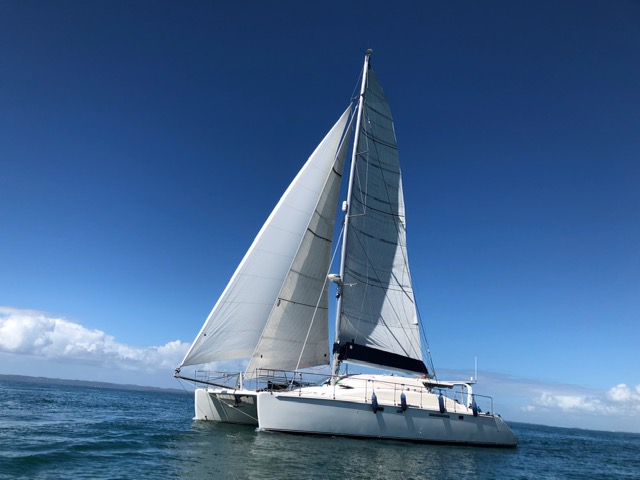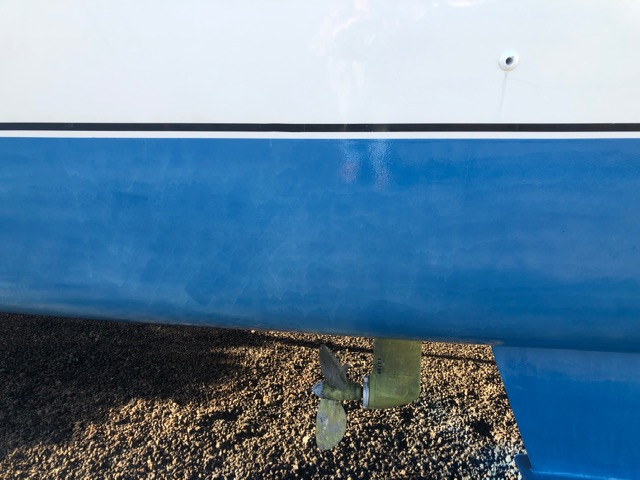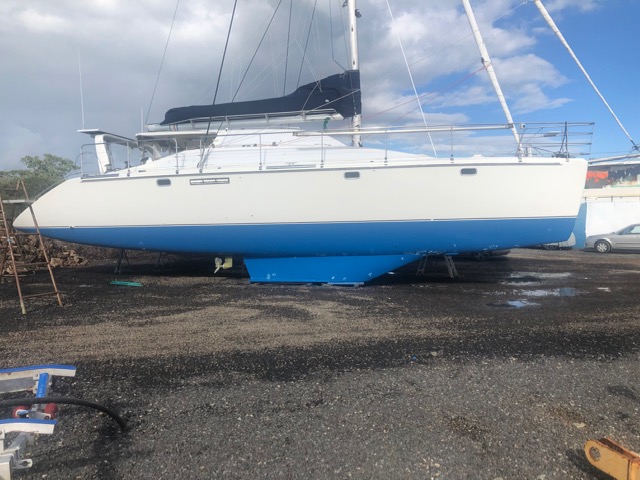Ich bin mehr als zufrieden mit Ihrem Produkt, die Propeller lassen sich perfekt mit dem Boot und den neuen Yanmar 4JH80-Motoren kombinieren. Die neuen Motoren sind ein softwaregesteuertes Common-Rail-Kraftstoffsystem und daher sind selbst kleine Unterschiede in der Instrumentierung sehr leicht zu erkennen. Während des Segelns mit beiden Motoren im Leerlauf und dem Heben des Segels sehe ich einen Rückgang des Kraftstoffverbrauchs.
Der Moment, in dem die Propeller den Unterschied ausmachen, ist in schwierigen Situationen wie dem Andocken während der Fahrt zu einem neuen Yachthafen, wo die Flut oder der Wind Probleme verursachen. Der Schub und die sofortige Reaktion zusammen machen das Andocken an neuen Orten unter schwierigen Bedingungen zum Kinderspiel. Bei einer anderen Gelegenheit überquerte ich eine Küstenregion, als ich auf eine 3 m lange Welle stieß und das Boot bei niedrigen Drehzahlen leicht reagierte. Ich glaube, dass wieder einmal die Schubmotorkombination der Grund war.
Beim Vergleich von Propeller A … und EWOL-Propeller bei 2.500 U / min ergeben sich einige interessante Daten aus der Leistung des Bootes. EWOL-Propeller treiben das Boot mit 3,5 Litern Kraftstoff pro Seite auf 9,5 Knoten.
Mit dem A-Propeller … obwohl sie einen Durchmesser von 17 Zoll haben, macht das Boot mit der gleichen Drehzahl 2500 nur 8 Knoten und verbraucht 4,7 Liter pro Stunde und Seite.
Ich finde den Unterschied im Katamaran-Management sehr offensichtlich, besonders wenn ich versuche, das Boot in einem überfüllten Yachthafen zu manövrieren. Mit dem EWOL steuere ich es mit meinen Fingerspitzen bei einer sehr geringen Anzahl von Umdrehungen, aber mit dem A … muss ich viel Drehzahl verwenden, um eine Antwort zu erhalten.
D.C. – Australia
Original Text
I am more than happy with you product, the propellers have been an excellent combination with the boat and the new Yanmar 4JH80 engines. The new engines are a common rail fuel system which is computer controlled therefore it is very easy to see on the instruments even slight differences. While underway with both engines just idling over if I pull up a sail I can see the fuel consumption drop.
Where you propellers come into their own however is in tight situations like docking while travelling in tight situations , in a new marina where the tide or wind is causing problems. The thrust and instant response is amassing making docking in new places under difficult conditions a piece of cake. On one other occasion I was crossing a coastal bar when I encountered a 3 meter swell in which the boat just handled with ease at lower RPMs. I believe again the thrust engine combination was reason .
There some interesting figures come out of the boats performance by comparison of the “A…prop” and the EWOL prop At 2,500 RPMs. The EWOL props push the boat along at 9.5 knots using 3.5 litres of fuel per side.
With the A…prop although they are 17 inch in diameter the boat for the same RPM 2500 is only doing 8 knots and using 4.7 litres per hour per side.
I find the difference in handling the cat very noticeable especially when trying to position the boat in a busy marina. With the EWOL I have fingertip control at very low RPM but the A…. Prop I have to use lots of RPM to get a response.
D.C. – Australia








